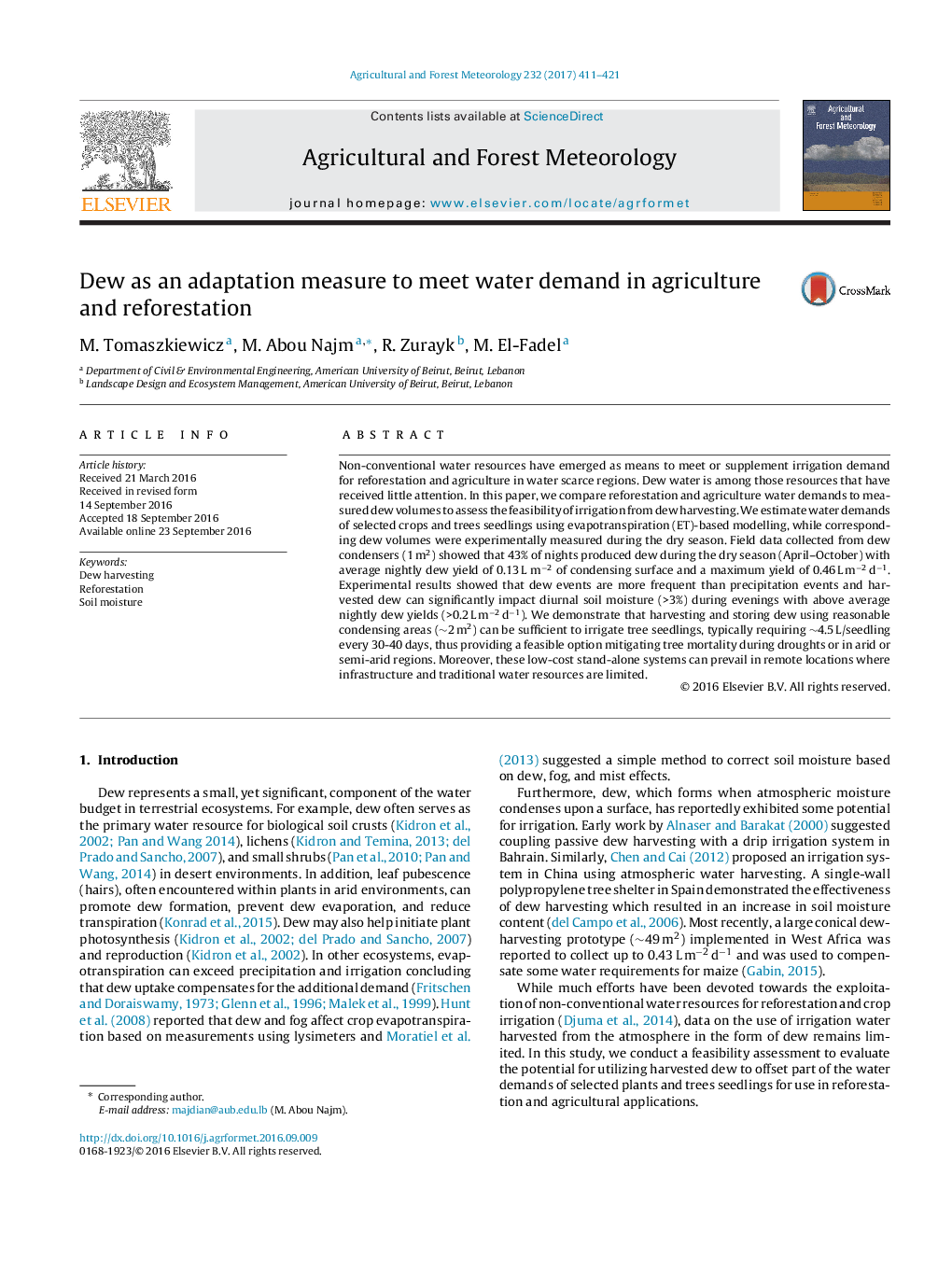| Article ID | Journal | Published Year | Pages | File Type |
|---|---|---|---|---|
| 6458117 | Agricultural and Forest Meteorology | 2017 | 11 Pages |
â¢Promising comparison between measured dew volumes and reforestation water demands.â¢Dew from reasonable condensing areas is sufficient to irrigate tree seedlings.â¢Dew is feasible for mitigating tree mortality in droughts or arid/semi-arid regions.â¢Dew can be viable adaptation measure to climate change or reforestation initiatives.â¢Harvesting high dew yields can significantly impact diurnal soil moisture (>3%).
Non-conventional water resources have emerged as means to meet or supplement irrigation demand for reforestation and agriculture in water scarce regions. Dew water is among those resources that have received little attention. In this paper, we compare reforestation and agriculture water demands to measured dew volumes to assess the feasibility of irrigation from dew harvesting. We estimate water demands of selected crops and trees seedlings using evapotranspiration (ET)-based modelling, while corresponding dew volumes were experimentally measured during the dry season. Field data collected from dew condensers (1 m2) showed that 43% of nights produced dew during the dry season (April-October) with average nightly dew yield of 0.13 Lâ mâ2 of condensing surface and a maximum yield of 0.46 L mâ2 dâ1. Experimental results showed that dew events are more frequent than precipitation events and harvested dew can significantly impact diurnal soil moisture (>3%) during evenings with above average nightly dew yields (>0.2 L mâ2 dâ1). We demonstrate that harvesting and storing dew using reasonable condensing areas (â¼2 m2) can be sufficient to irrigate tree seedlings, typically requiring â¼4.5 L/seedling every 30-40 days, thus providing a feasible option mitigating tree mortality during droughts or in arid or semi-arid regions. Moreover, these low-cost stand-alone systems can prevail in remote locations where infrastructure and traditional water resources are limited.
